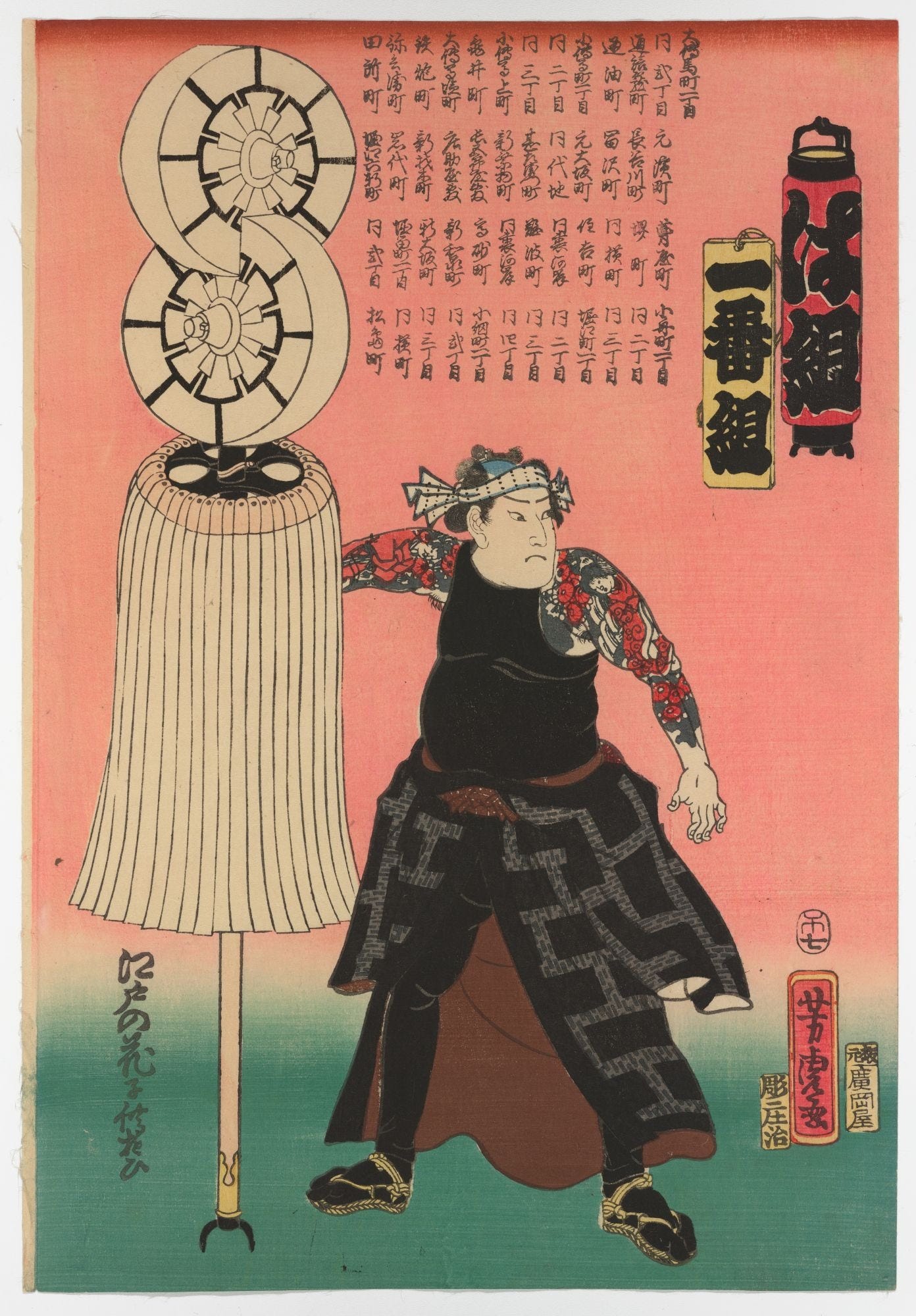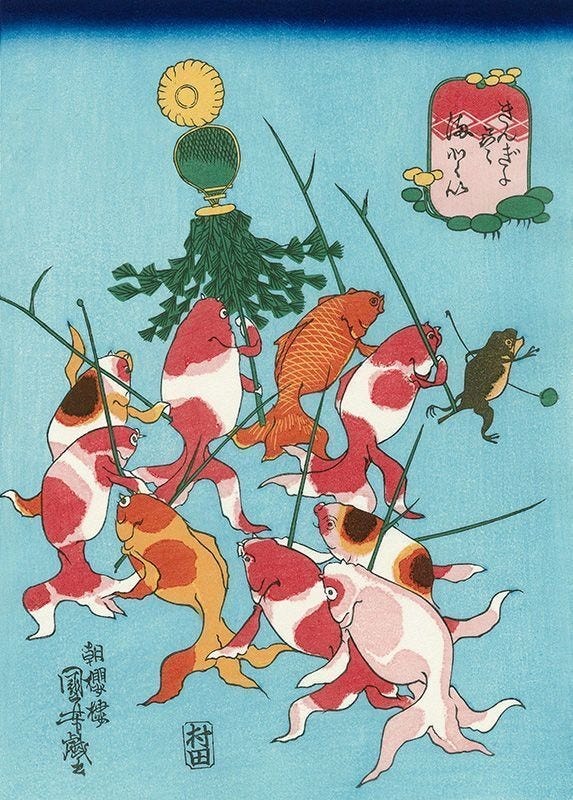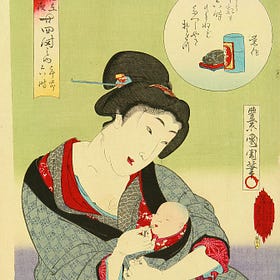🖼️ Art Inspector: What Are These Fishy Firemen Doing?
In Japan’s Edo period (1603 - 1868), firemen held a special place in people’s hearts. “Fires and fights are the flowers of Edo” was a common saying. When fires broke out in the capital, these tattooed, sake-fueled heroes rushed in, shouting and swinging their hooks.
The city was made of wood, paper, and wishful thinking, so “fighting fire with water” didn’t get you far. Buckets and pumps existed, sure, but by the time you found enough water, the house was already charcoal.
Instead, Edo’s firefighters (hikeshi 火消) often went for the “if it can’t burn, it can’t spread” approach. They used hooks on poles and their bare hands to tear down houses, rip off roofs, and smash walls around the fire’s path. Their coats were thick and their skin thicker. They charged toward danger while everyone else ran screaming in the opposite direction.
This art print from Utagawa Kuniyoshi shows firemen in fish form, holding reeds with hooks. One carries a matoi 纏, a standard that hikeshi used to alert people that there was a fire in the area.

Why fish? Edo artists drew people as animals to get around government censorship laws against artwork of courtesans and actors. Humanoid animals quickly became a popular genre. It’s also kind of funny that fish are fighting fires underwater.
🖼️ Art Inspector: Cool Meiji Baby Bottle
Oh my god, a baby in a Japanese art print that does not look like a creepy old man. It’s a beautiful day.



